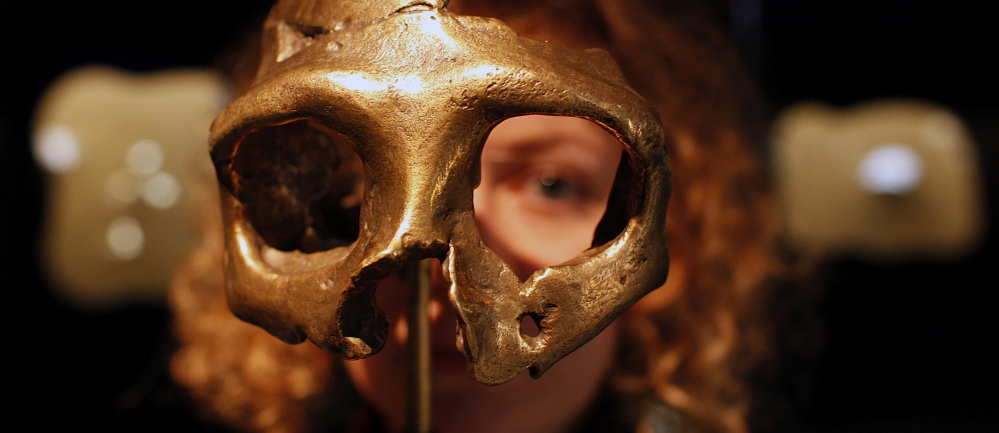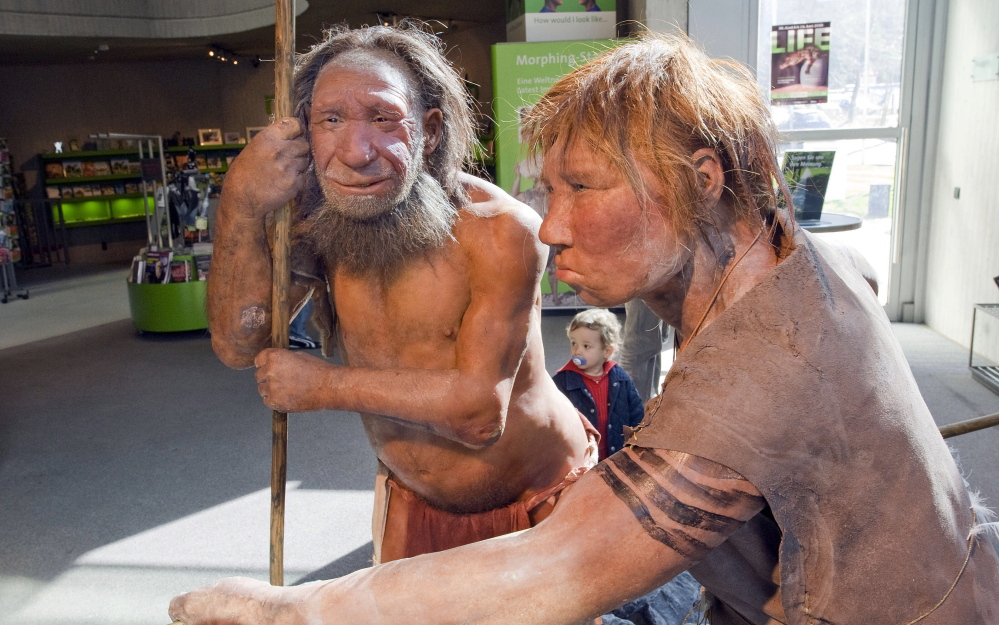Maybe it’s their famously protruding brow ridge or perhaps it’s the now-discredited notion that they were primitive scavengers too dumb to use language or symbolism, but somehow Neanderthals picked up a reputation as brutish, dim and mannerless cretins.
Yet the latest research on the history and habits of Neanderthals suggests that such portrayals of them are entirely undeserved. It turns out that Neanderthals were capable hunters who used tools and probably had some semblance of culture, and the DNA record shows that if you trace your ancestry to Europe or Asia, chances are very good that you have some Neanderthal DNA in your own genome.
A MATTER OF APPEARANCE
The bad rap began when the first Neanderthal skull was discovered around 1850 in Germany, says Paola Villa, an archaeologist at the University of Colorado. “The morphological features of these skulls – big eyebrows, no chin – led to the idea that they were very different from us, and therefore inferior,” she says. While the majority of archaeologists no longer believe this, she says, the idea that Neanderthals were inferior, brutish or stupid remains in popular culture.
Neanderthals first appeared in Europe and western Asia between 300,000 and 400,000 years ago. They are our closest (extinct) relative, and their species survived until 30,000 to 40,000 years ago, when they vanish from the fossil record, says Svante Paabo, director of the Max Planck Institute of Evolutionary Anthropology in Leipzig, Germany, and author of “Neanderthal Man: In Search of Lost Genomes.” Why these relatives of ours thrived for so long and then ended their long, successful run about the same time that modern humans began to spread remains a point of debate and speculation.
One theory holds that Neanderthals went extinct because they were inferior to the modern humans they encountered. But in a paper published in PLOS One last year, Villa and Wil Roebroeks, an archaeologist at Leiden University in the Netherlands, conclude that a comparison of Neanderthals and modern humans simply doesn’t support what they call the “modern superiority complex,” or the notion that Neanderthal were inherently inferior to the modern humans who overlapped with them.
Compared with humans today, Neanderthals were shorter, stockier and heavier built, with bigger bulges on their bones where muscles attach. But there’s no reason to think that they were dumb, Villa says. Their brains were actually slightly larger than ours, and archaeological sites have turned up evidence that Neanderthals used personal ornaments including bird feathers, claws and shells smeared with ochre. The use of such ornaments supports the idea that Neanderthals were capable of symbolism and abstract thought, Villa says.
EARLY ARTISTS
Some of them may have been artists. In September, a research team working in Gibraltar (a British colony at the southern end of Spain) published a description of a rock engraving found in a cave that they say is the first known example of Neanderthal art. The engraving consists of multiple crossed lines that were created, the researchers write, “by repeatedly and carefully passing a pointed lithic stone tool into the grooves, excluding the possibility of an unintentional or utilitarian origin.” The engraving, the researchers say, demonstrates a Neanderthal capacity for abstract thought and expression.
They also appear to have buried their dead. In a study published in the Proceedings of the National Academies of Science last January, researchers document evidence from the La Chapelle-aux-Saints archaeological site in France showing a Neanderthal burial site.
ADVANCED THINKING
Twisted fibers found on stone tools at another French site suggest that Neanderthals knew how to make string or cordage, and six stone arrowheads recovered there imply that they also used complex projectile techniques – tasks that would require advanced thinking.
Starting about 200,000 years ago, Villa says, European Neanderthals used tools made with pitch, a glue material that doesn’t occur naturally but must be synthesized from tree bark. Modern experiments show that producing pitch with the resources available to Neanderthals requires a high degree of technical knowledge.
Once thought to be scavengers incapable of hunting, they actually were accomplished big-game stalkers who thrived by hunting a wide range of animals in a variety of environments, the latest research shows.
Along with the idea that they were scavengers came the notion that Neanderthals ate a very limited diet, consisting mostly of large or medium-size mammals – dietary constraints that would have left them less adaptable to changes in the environment than early modern humans. But research simply doesn’t bear this out.
The advent of advanced DNA technology has added a rich new layer to our understanding of Neanderthals and their relationship to us.
One thing is clear: Neanderthals never entirely vanished. “They live on a little bit in people today,” Paabo says.
Copy the Story LinkSend questions/comments to the editors.




Success. Please wait for the page to reload. If the page does not reload within 5 seconds, please refresh the page.
Enter your email and password to access comments.
Hi, to comment on stories you must . This profile is in addition to your subscription and website login.
Already have a commenting profile? .
Invalid username/password.
Please check your email to confirm and complete your registration.
Only subscribers are eligible to post comments. Please subscribe or login first for digital access. Here’s why.
Use the form below to reset your password. When you've submitted your account email, we will send an email with a reset code.